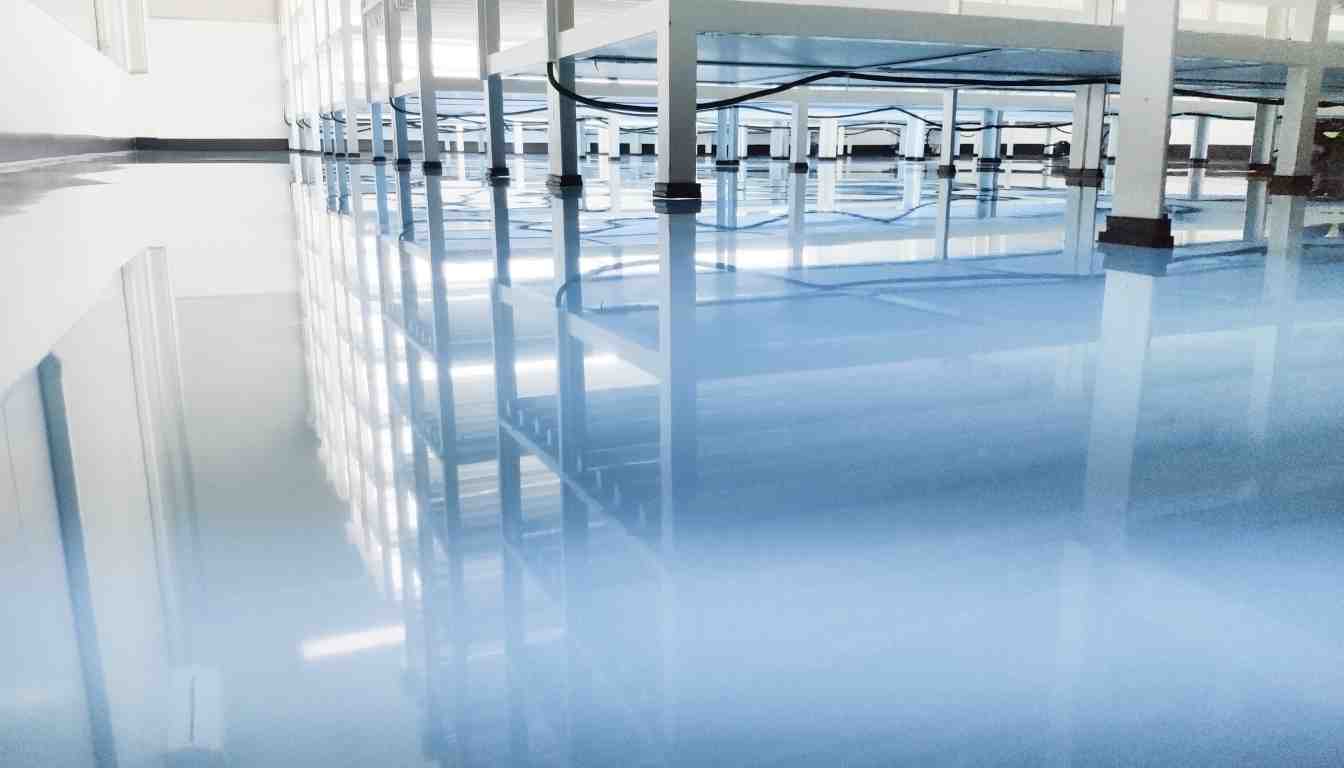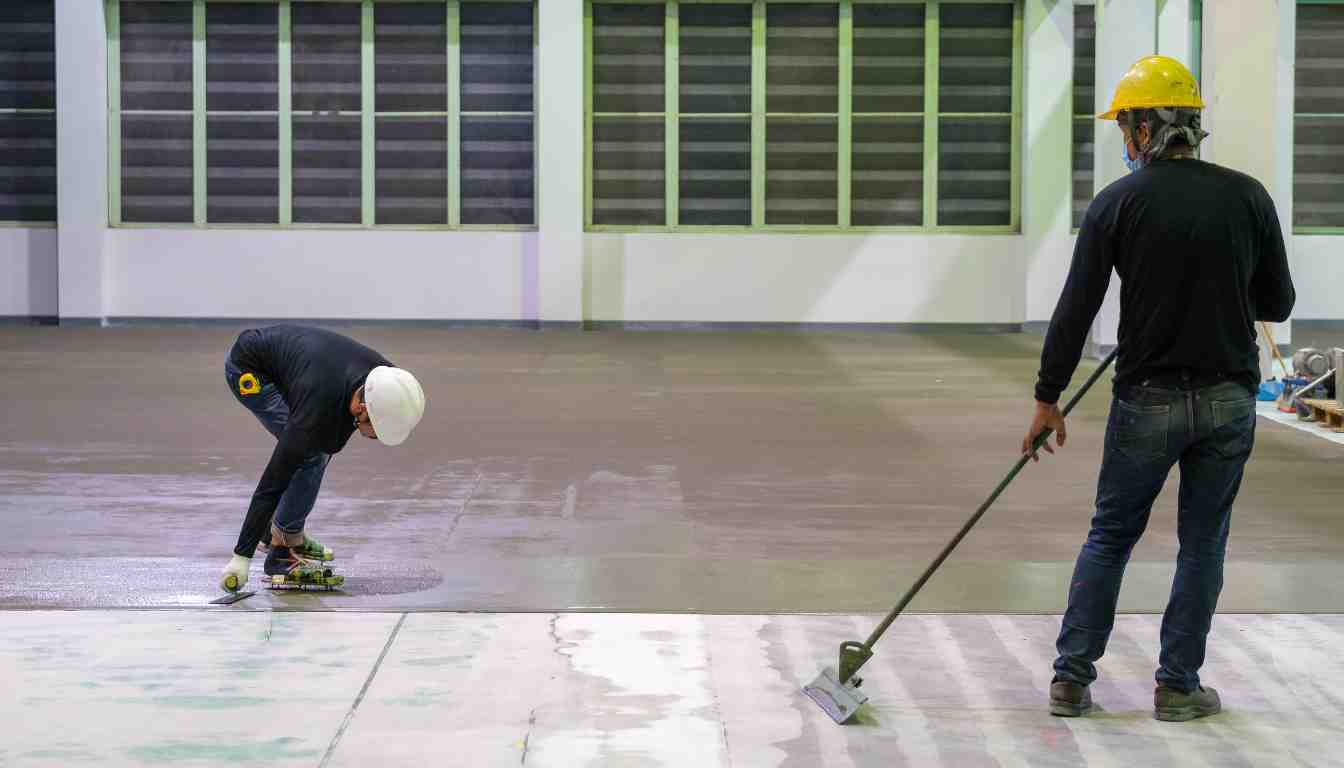Yes, you can epoxy over epoxy. Epoxy can bond to cured epoxy surfaces, facilitating layered applications for various purposes.
Epoxy is a versatile and durable material commonly used for coating floors, countertops, and other surfaces. However, over time, these coatings may deteriorate due to wear and tear or exposure to chemicals. In such cases, you may need to apply a fresh epoxy coating to restore the surface’s appearance and functionality.
The good news is that epoxy can adhere to existing epoxy surfaces, allowing for easy application of additional layers. This not only saves time and effort but also ensures a seamless and cohesive finish. Whether you want to repair or enhance an epoxy-coated surface, adding a new layer of epoxy can effectively revitalize it.
Benefits Of Epoxy Over Epoxy
Epoxy coatings have become increasingly popular in the world of flooring due to their durability, chemical resistance, and overall performance. When it comes to maintaining and improving the longevity of epoxy coated surfaces, many people wonder if it is possible to apply a new layer of epoxy over an existing one. Fortunately, there are several benefits to epoxy over epoxy application that make it a viable option for enhancing the performance and appearance of your epoxy flooring.
Improved Durability
One of the key benefits of applying epoxy over epoxy is the improved durability it provides. By adding an extra layer of epoxy, the surface becomes more resistant to impact, abrasion, and scratches. This means that your epoxy flooring will be better equipped to handle heavy foot traffic, dropped objects, and other daily wear and tear.
Enhanced Chemical Resistance
Another advantage of epoxy over epoxy application is the enhanced chemical resistance it offers. Epoxy coatings are already known for their resistance to chemical spills and stains, but adding an additional layer further increases this protection. With the extra barrier, your flooring will be better able to withstand exposure to harsh chemicals, oils, and other substances that can potentially damage the surface.
Increased Thickness
Applying epoxy over epoxy results in an increased thickness of the coating. This thicker layer provides additional insulation and insulation against potential damage, ensuring that your flooring remains in optimal condition for a longer period. It also adds a more substantial and visually appealing depth to the surface, giving it a more polished and professional look.
Better Adhesion
Lastly, epoxy over epoxy application ensures better adhesion between the layers. The fresh layer of epoxy firmly bonds to the existing one, creating a strong and seamless surface. This improved adhesion not only enhances the longevity and performance of your flooring but also minimizes the risk of delamination and other issues that can occur with poorly bonded epoxy coatings.
In conclusion, applying epoxy over epoxy brings several benefits to your flooring, including improved durability, enhanced chemical resistance, increased thickness, and better adhesion. By capitalizing on these advantages, you can enjoy a longer-lasting and more resilient epoxy coated surface.

Considerations Before Applying Epoxy Over Epoxy
Epoxy is a versatile and durable flooring option that is commonly used in garages, warehouses, and other industrial settings. However, over time, the epoxy coating may start to show signs of wear and tear. If your epoxy floor is in need of a refresh, you may be wondering if it is possible to apply a new coat of epoxy over the existing one. In this article, we will discuss the important considerations you need to keep in mind before applying epoxy over epoxy. By understanding these factors, you can ensure a successful and long-lasting epoxy flooring application.
Surface Preparation
Before applying epoxy over an existing epoxy floor, proper surface preparation is crucial. The surface needs to be thoroughly cleaned and free of any contaminants such as dirt, dust, grease, or oil. Any loose or peeling epoxy should also be removed to create a smooth and uniform surface. Failure to prepare the surface adequately can result in poor adhesion, which can lead to premature failure of the new epoxy coat.
Curing Time
The curing time of the existing epoxy floor is another important consideration. Epoxy requires a certain amount of time to fully cure and harden. Applying a new coat of epoxy too soon can interfere with the curing process and compromise the overall strength and durability of the flooring system. It is recommended to wait for the existing epoxy to cure completely before applying a new coat. This ensures optimal adhesion between the layers and enhances the longevity of the flooring.
Compatibility Of Epoxy Products
Not all epoxy products are compatible with each other. It is essential to ensure that the new epoxy you are planning to apply is compatible with the existing epoxy floor. Using incompatible epoxy products can lead to adhesion issues, discoloration, and even chemical reactions that can compromise the integrity of the flooring system. To avoid such problems, always check the product specifications and recommendations provided by the manufacturer. This will help ensure that you choose the right epoxy coating for your specific application.
By considering these factors – surface preparation, curing time, and compatibility of epoxy products – you can ensure a successful application of epoxy over epoxy. Remember to follow all the necessary steps and guidelines provided by the manufacturer to achieve a durable and visually appealing epoxy flooring system.
Steps To Epoxy Over Epoxy
Epoxy can be applied over existing epoxy, but there are important steps to follow. Properly clean and prepare the surface, sand the existing epoxy, apply a new layer of epoxy, and allow it to cure for the recommended time.
Clean The Existing Epoxy Surface
To successfully epoxy over epoxy, the first crucial step is to ensure that the existing epoxy surface is clean and free from any dirt, dust, grease, or residue. Cleaning the surface properly will promote better adhesion and prevent any imperfections in the newly applied epoxy. Here are the steps to clean the existing epoxy surface:
- Thoroughly sweep the surface to remove any loose dirt or debris.
- Use a mild detergent mixed with water to clean the surface. Scrub gently using a soft brush or mop.
- Rinse the surface with clean water to remove any soap residue.
- Dry the surface completely using a clean towel or let it air dry.
Scuff The Surface For Better Adhesion
Scuffing the existing epoxy surface is an important step for enhancing the adhesion of the new epoxy. This process creates a rough texture on the surface, allowing the new epoxy to bond more securely. Follow these steps to scuff the surface:
- Use fine-grit sandpaper or a sanding block to gently scuff the surface. Work in a circular motion to create an even texture.
- Wipe away any dust or debris resulting from the scuffing using a clean, dry cloth.
Mix And Apply The New Epoxy
Once the existing epoxy surface is clean and scuffed, it’s time to mix and apply the new epoxy. Follow these steps:
- Read and follow the manufacturer’s instructions on the epoxy kit for the proper mixing ratio and application guidelines.
- In a clean container, combine the epoxy resin and hardener according to the recommended proportions.
- Thoroughly mix the components together for the specified time, ensuring there are no streaks or lumps.
- Using a roller or brush, apply a thin, even coat of the mixed epoxy onto the scuffed surface, working in small sections.
- Continue applying the epoxy until the entire surface is covered, being careful not to overapply and create uneven thickness.
Allow For Proper Curing
After applying the new epoxy, it’s important to allow it to cure properly for optimal results. Follow these guidelines:
- Consult the manufacturer’s instructions for the recommended curing time. This may vary depending on the specific type of epoxy used.
- Avoid exposing the newly applied epoxy to excessive moisture, temperature changes, or heavy traffic during the curing process.
- Provide adequate ventilation to help with the curing process and to prevent the buildup of harmful fumes.
- Allow enough time for the epoxy to fully cure before subjecting it to any stress or heavy use.
By following these steps, you can successfully epoxy over epoxy, creating a durable and attractive surface with improved adhesion. Remember to always follow the manufacturer’s instructions and take the necessary precautions for a successful epoxy application.

Tips And Tricks For Successful Epoxy Over Epoxy
If you’re considering applying a fresh coat of epoxy over existing epoxy, there are a few key tips and tricks to keep in mind. This process can be a great way to refresh and enhance the appearance of your epoxy surface, but it’s essential to follow the right steps for a successful outcome. Read on to learn the important factors that contribute to a successful epoxy over epoxy project.
Use The Same Brand And Type Of Epoxy
When it comes to adding a new layer of epoxy over an existing epoxy surface, it’s crucial to use the same brand and type of epoxy. Mixing different epoxy products can lead to compatibility issues, resulting in poor adhesion and an unsatisfactory finish. Stick with the same epoxy brand and type to ensure a strong bond between the layers.
Make Sure The Existing Epoxy Is In Good Condition
Prior to applying a new coat, it’s essential to evaluate the condition of the existing epoxy. Inspect the surface for any signs of damage, such as cracks, chips, or peeling. If the existing epoxy is compromised, it’s necessary to repair or remove it before proceeding with the new layer. Applying fresh epoxy over damaged or deteriorated epoxy will only result in a subpar finish.
Follow Manufacturer Guidelines
To achieve the best results, always follow the manufacturer’s guidelines when applying epoxy over epoxy. Each epoxy product may have specific instructions regarding surface preparation, mixing ratios, and curing times. Adhering to these guidelines ensures that the epoxy cures properly and provides a durable and attractive finish.
Apply Multiple Thin Coats
When adding a new layer of epoxy, it’s recommended to apply multiple thin coats rather than one thick layer. This approach helps to avoid issues such as air bubbles or uneven curing. Apply each coat in a smooth and even manner, allowing sufficient drying time between layers. By doing so, you can achieve a flawless and professional-looking result.
Conclusion
Epoxy can be applied over existing epoxy with proper preparation and adherence to certain guidelines. It is crucial to ensure the existing epoxy is in good condition, clean, and properly sanded before applying a new epoxy layer. By following these steps, you can achieve a durable and long-lasting epoxy coating that enhances the appearance and protection of your surfaces.
Always remember to consult with a professional if you are unsure about the process.


